
Current Nanoscience
Scope & Guideline
Innovating the Future of Nanotechnology
Introduction
Aims and Scopes
- Nanotechnology Applications:
Focuses on the application of nanomaterials in diverse fields such as medicine, electronics, and environmental remediation, showcasing how nanoscale innovations can solve real-world problems. - Sustainable and Green Nanotechnology:
Promotes research on environmentally friendly synthesis methods and the development of sustainable nanomaterials that minimize ecological impact while maximizing efficiency in applications. - Nanomaterials Characterization:
Emphasizes the importance of advanced characterization techniques to understand the properties and behaviors of nanostructured materials, which is essential for optimizing their applications. - Drug Delivery Systems:
Explores innovative nanocarriers for targeted drug delivery, improving bioavailability and therapeutic efficacy, particularly in cancer treatment and chronic diseases. - Nanotechnology in Agriculture:
Investigates the role of nanotechnology in enhancing agricultural productivity, including pesticide delivery systems and soil health improvement. - Interdisciplinary Approaches:
Encourages collaboration across disciplines, integrating insights from chemistry, biology, physics, and engineering to foster innovative solutions in nanoscience.
Trending and Emerging
- Integration of Artificial Intelligence in Nanotechnology:
The incorporation of AI and machine learning techniques in the design and optimization of nanomaterials and processes is rapidly gaining traction, enhancing the efficiency and precision of nanotechnology applications. - Nanotechnology for Environmental Remediation:
An increasing number of studies focus on using nanomaterials for environmental cleanup, including water treatment and pollutant degradation, highlighting the growing importance of sustainability. - Smart Nanocarriers for Drug Delivery:
There is a surge in research on intelligent nanocarriers that respond to specific stimuli (e.g., pH, temperature) for targeted drug delivery, aiming to improve therapeutic outcomes in various medical fields. - Nanomaterials for Energy Applications:
The exploration of nanotechnology in renewable energy solutions, such as solar cells and batteries, is on the rise, reflecting the global push for sustainable energy sources. - Biomimetic Nanotechnology:
Research that draws inspiration from nature to develop nanomaterials and systems is emerging, aiming to create more efficient and adaptive technologies. - Nanotechnology in Biotechnology and Medicine:
A notable trend is the integration of nanotechnology with biotechnology, particularly in areas such as gene therapy, vaccine development, and personalized medicine, which are crucial for addressing global health challenges.
Declining or Waning
- Conventional Material Synthesis Techniques:
There is a noticeable decrease in studies focusing on traditional synthesis methods as researchers increasingly favor green and sustainable approaches, reflecting a broader shift towards environmentally friendly practices. - Basic Nanomaterial Studies:
Research centered solely on the fundamental properties of nanomaterials without application-focused studies is declining, as the field moves towards practical applications that address societal challenges. - General Reviews on Nanotechnology:
The prevalence of generic review articles without novel insights or applications has decreased, as the journal seeks to publish more impactful and data-driven research. - Nanotechnology in Non-specific Applications:
Research that does not specify the application of nanotechnology in solving particular problems is becoming less common, as the emphasis is now on targeted and innovative applications.
Similar Journals
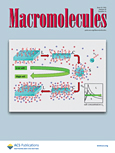
MACROMOLECULES
Connecting Ideas, Inspiring DiscoveriesMACROMOLECULES, published by the American Chemical Society, is a premier journal in the fields of inorganic chemistry, materials chemistry, organic chemistry, and polymers and plastics. Since its inception in 1968, this influential journal has established itself as a vital resource for researchers, professionals, and students, showcasing cutting-edge research and advancements in the study of macromolecules and high-performance polymers. With a distinguished impact factor and consistently ranking in the top quartiles (Q1) across its relevant categories, MACROMOLECULES is recognized for its high-quality publications that contribute significantly to the scientific community. The journal is accessible in both print and electronic formats, facilitating rapid dissemination of knowledge. By providing a platform for innovative studies and groundbreaking discoveries, MACROMOLECULES continues to play a crucial role in shaping the future of materials science and polymer research.

Discover Nano
Pioneering Discoveries in the World of NanomaterialsDiscover Nano is a pioneering journal published by SPRINGER, dedicated to the rapidly evolving field of nanoscience and nanotechnology. Established in 2023, this innovative platform provides an open-access forum for researchers, professionals, and students to share and disseminate cutting-edge findings in materials science and condensed matter physics. With its commitment to accessibility, Discover Nano encourages a broad spectrum of contributions, aiming to foster collaboration and stimulate discussion in this dynamic area of study. As a new entry into the academic community, the journal holds great potential for growth, aspiring to increase its visibility and impact in the materials science arena, where it currently ranks in the bottom quartile for both materials science and physics categories. Based in Germany and reaching a global audience, Discover Nano represents a significant opportunity for those looking to shape the future of nanotechnology through impactful research and interdisciplinary dialogue.
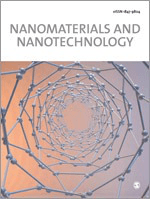
Nanomaterials and Nanotechnology
Connecting Researchers to the World of NanomaterialsNanomaterials and Nanotechnology is a premier journal published by HINDAWI LTD, dedicated to advancing knowledge in the rapidly evolving fields of nanomaterials and nanoscale applications. Established as an Open Access platform since 2011, the journal aims to disseminate high-quality research that provides insights into nanotechnology's manifold aspects, including biotechnology, ceramics and composites, as well as electrical and electronic engineering. With a compelling impact factor reflected in its robust Scopus rankings—placing it in the 80th percentile in Engineering and the 72nd percentile in Biotechnology—it stands as a key resource for researchers, professionals, and students seeking to stay at the forefront of innovation in materials science. The journal occupies a distinguished position in the academic community, featuring studies that explore the synthesis, characterization, and application of nanomaterials, thereby contributing significantly to scientific discourse and technological advancement in this critical area.
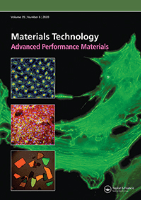
MATERIALS TECHNOLOGY
Exploring the Depths of Materials TechnologyMATERIALS TECHNOLOGY is a prestigious academic journal published by Taylor & Francis Ltd, based in the United Kingdom. With an ISSN of 1066-7857 and an E-ISSN of 1753-5557, this journal has established itself as a vital resource in the fields of Condensed Matter Physics, Materials Science, Mechanical Engineering, and Mechanics of Materials, earning a Q2 ranking in multiple categories as of 2023. With a rich publication history that dates back to the early 1970s, it serves as an essential platform for disseminating innovative research and developments in materials technology. Although not available through Open Access, the journal continues to attract contributions from leading researchers, ensuring high-quality articles that advance knowledge in the materials domain. The journal's commitment to excellence is reflected in its notable Scopus rankings, placing it within the 70th to 78th percentiles across several engineering and physics categories. As a vital resource for researchers, professionals, and students alike, MATERIALS TECHNOLOGY plays a critical role in shaping the future of materials science and engineering.

Journal of Experimental Nanoscience
Transforming Ideas into Nanoscientific InnovationsThe Journal of Experimental Nanoscience, published by Taylor & Francis Ltd, is an esteemed open-access journal dedicated to advancing the field of nanoscience and its applications across various disciplines. Since its establishment, the journal has aimed to provide a comprehensive platform for researchers and professionals to disseminate innovative findings in nanotechnology, bioengineering, and materials science. With an ISSN of 1745-8080 and E-ISSN of 1745-8099, this journal has been pivotal in promoting high-quality research in its converged years from 2006 to 2024. Recognized for its contributions, it currently holds a Q3 ranking in core categories such as Bioengineering, Biomedical Engineering, Materials Science, and Nanoscience and Nanotechnology. Although its H-index is not specified, its Scopus ranks reflect its growing influence, with notable percentiles in various engineering fields. By offering open access since 2016, the Journal of Experimental Nanoscience enhances the accessibility of vital research to a global audience. Researchers, professionals, and students will find this journal an invaluable resource for staying abreast of the latest advancements and breakthroughs in nanoscience.
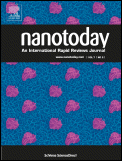
Nano Today
Catalyzing discoveries that shape tomorrow's innovations.Nano Today is a prestigious journal published by ELSEVIER SCI LTD that stands at the forefront of nanoscience and nanotechnology research. With an impact factor that underscores its significance, this journal has achieved remarkable rankings in several key categories as of 2023, including Q1 positions in Bioengineering, Biomedical Engineering, Biotechnology, Materials Science, and Pharmaceutical Science, making it an essential resource for scholars and professionals alike. ISSN 1748-0132 and E-ISSN 1878-044X, the journal serves as a vital platform for disseminating cutting-edge research findings and innovative applications in the field. Although open access options are not available, the journal's rich repository of peer-reviewed articles provides invaluable insights into the latest advancements in nanotechnologies. Based in the Netherlands, Nano Today not only connects a global network of researchers but also propels forward the conversation on the transformative potential of nanomaterials across multiple disciplines. With a commitment to advancing knowledge and fostering innovation, Nano Today is an indispensable tool for academics and practitioners dedicated to pushing the boundaries of scientific exploration.
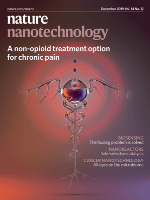
Nature Nanotechnology
Exploring the Boundaries of Nanotechnology Research.Nature Nanotechnology, published by NATURE PORTFOLIO, stands at the forefront of scientific innovation, focusing on the rapidly evolving field of nanoscience and nanotechnology. With an impressive impact factor and ranking in the top Q1 quartiles across multiple disciplines—including Atomic and Molecular Physics, Bioengineering, and Materials Science—this journal is a pivotal resource for researchers and professionals dedicated to advancing knowledge and applications at the nanoscale. Its diverse scope encompasses cutting-edge research that bridges disciplines, addressing critical challenges in engineering, physics, and biomedical fields. Although the journal currently does not offer an open-access option, readers can access a wealth of information that is vital for anyone involved in pioneering research and development efforts. With its robust editorial standards and a commitment to publishing high-caliber, groundbreaking work, Nature Nanotechnology serves as an indispensable platform for the dissemination of transformative ideas that will shape the future of technology and science.
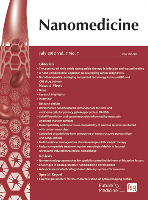
Nanomedicine
Catalyzing Innovations in the World of NanomedicineNanomedicine, published by Future Medicine Ltd, is a premier academic journal dedicated to the rapidly evolving field of nanotechnology in medicine. With an emphasis on innovative research and applications, this journal encompasses a broad spectrum of topics including bioengineering, biomedical engineering, and nanoscience, among others. Featuring an impressive Q1 ranking in Development and multiple Q2 rankings across significant categories, it serves as a pivotal resource for researchers and professionals aiming to stay at the forefront of advancements in these disciplines. While the journal is not open access, it is accessible through various institutional subscriptions, ensuring wide dissemination of cutting-edge findings. Notably, it has achieved substantial impact within the scientific community, indicated by its high rankings in Scopus and overall commitment to enhancing the understanding and application of nanomedicine. This journal is a vital conduit for fostering collaborations and innovations that transcend traditional medical paradigms.
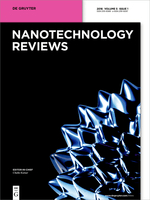
Nanotechnology Reviews
Connecting Ideas, Transforming FuturesNanotechnology Reviews, published by DE GRUYTER POLAND SP Z O O, stands at the forefront of the multidisciplinary field of nanoscience and nanotechnology. With an Open Access model adopted since 2019, this journal, identifiable by its ISSN 2191-9089 and E-ISSN 2191-9097, disseminates vital research that is accessible to a global audience. The journal is located in Germany and has established itself as a premier platform for innovative research, boasting impressive quartile rankings: Q1 across several categories including Biotechnology, Energy Engineering, and Materials Science, as well as a Q2 classification in Biomaterials as of 2023. The diverse scope enables authors to contribute to a range of topics, from biomedical applications to energy solutions and advanced materials, making it essential reading for researchers, professionals, and students passionate about cutting-edge developments. Additionally, with Scopus rankings highlighting its value across various domains and robust percentiles, including 94 in Engineering (miscellaneous), 93 in Medicine (miscellaneous), and 88 in Biotechnology, Nanotechnology Reviews is an influential and respected journal that fosters scientific dialogue and innovation.

Physical and Chemical Aspects of the Study of Clusters Nanostructures and Nanomaterials
Innovating at the Intersection of Physics and ChemistryPhysical and Chemical Aspects of the Study of Clusters, Nanostructures, and Nanomaterials is an esteemed open-access journal published by TVER STATE UNIVERSITY, dedicated to advancing the scientific discourse surrounding the intricate interplay of physical and chemical properties in nanostructure materials. Launched in 2017, this journal provides a vital platform for researchers, professionals, and students to disseminate and access cutting-edge findings in the rapidly evolving fields of nanotechnology and materials science. With an ISSN of 2226-4442 and an E-ISSN of 2658-4360, it aims to bridge the gap between academic research and practical applications. By facilitating open access to high-quality research, the journal plays an essential role in promoting innovative solutions to contemporary challenges in engineering, materials development, and related industries. The journal's scope includes but is not limited to the synthesis, characterization, and functionalization of nanomaterials, ensuring comprehensive coverage of this multidisciplinary field.